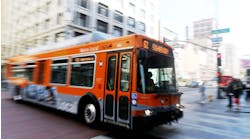In an effort to maintain a clean and healthy customer experience, the Los Angeles County Metropolitan Transportation Authority (L.A. Metro) has begun to roll out new cleaning protocols in the ancillary areas of the Wilshire / Western station on the D Line in Koreatown and the North Hollywood station on the B Line. The new protocols include staff wearing masks, coveralls and other PPE equipment.
What are ancillary spaces?
Ancillary spaces connect custodial supply rooms, electrical control rooms and other maintenance facilities through underground hallways. There are nearly 100 of these spaces on the B and D lines today and can be used during emergencies. The spaces serve as emergency exits and egress sites for the public. For this reason, the doors to these spaces remain unlocked at all times, despite L.A. Metro never having an emergency that necessitated the use of ancillary spaces, which would require emergency evacuation. These doors are alarmed and clearly demarcated by signage, not unlike how emergency exit doors are demarcated at an airport or any other public space. Trespassing into these areas is a violation of California law.
Why is L.A. Metro doing this?
During the pandemic, L.A. Metro experienced a rise in people trespassing into the ancillary spaces of its system, which are designed for use by L.A. Metro staff and are closed to the public. It has long been a L.A. Metro practice to regularly clean and patrol these areas to ensure they are being used appropriately. L.A. Metro has been focusing on removing trespassers and loiterers all over the system. So far in 2023, the authority has removed 37 trespassers from these non-public areas, and police have made 19 arrests related to ancillary area trespassing.
In May 2023, L.A. Metro commissioned a study of the condition of these areas from an industrial hygienist and discovered numerous biohazards, such as spilled chemicals, drug residue and human waste. While risk to riders is minimal, as the biohazards are present in areas not accessed by the public for the purposes of riding the system, the study concluded L.A. Metro needed to do more to keep employees safe while cleaning and performing maintenance in these areas.
The new cleaning protocols
In line with recommendations from the study, L.A. Metro launched a new two-step process to clean out non-public ancillary spaces.
- Armed contract security officers inspect the areas for the presence of trespassers. Once secured, custodians spray the spaces down with cleaning agents.
- Once the non-public ancillary areas are again inspected to ensure there are no trespassers present, the custodians reenter them and remove the debris left behind by trespassers before conducting thorough cleaning operations.
L.A. Metro employees cleaning and maintaining these areas work in teams of a minimum of two security escorts and four to six custodians. All the crew members are outfitted with appropriate respirators (PAPR respirators or P-100 masks) to protect their health and safety.
What’s next?
In the coming weeks, L.A. Metro will cover all the non-public ancillary areas along the B and D Lines.

